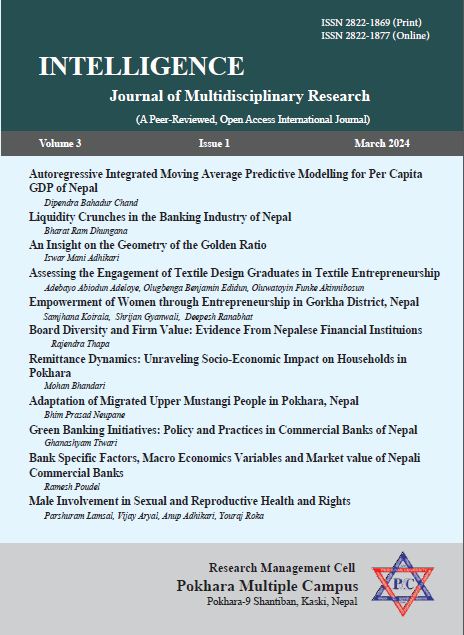Liquidity Crunches in the Banking Industry of Nepal
DOI:
https://doi.org/10.3126/ijmr.v3i1.65425Keywords:
Banking industry, Bank lending policy, Capital expenditure , Liquidity crunch, Monetary policyAbstract
Liquidity crunches in the Nepalese banking sector have been a critical issue for the last few years. This research aims to examine the causes, consequences, and improvement of liquidity crunches in the context of the Nepalese banking industry. This study is based on primary sources with explanatory and descriptive research design. The study population is all the bankers and experts involved in the banking sector - commercial banks, development banks, and regulatory authorities of Pokhara Metropolitan City, Kaski, Nepal. The five-point Likert scale questionnaires were developed to collect the data from the 213 banking professionals based on the non-probability sampling method. This study found a significant impact of government capital expenditure, bank lending policy, and monetary policy on liquidity crunches in the banking industry. The liquidity crunch hampers the growth of business and industry, and discourages entrepreneurs because they are not getting loanable funds as and when required. It creates instability in the financial system, deteriorates the investment environment, generates high inflation and unemployment rates , and affects economic growth rate in the country. The government should increase capital expenditure capacity. Bank lending policy should be directed towards a productive investment. Appropriate monetary policy should be designed to address the liquidity crunch problem in the banking sector. For this, the government and regulatory authority may promote an inclusive and sound financial system in the nation.




